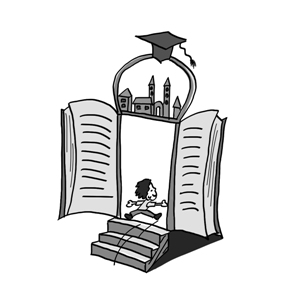What price a ‘foreign’ education?

Shanghai's education commission last week issued a new set of guidelines to tighten regulations governing international sections in local public schools. It requires that such sections now charge the same tuition fees as those who are studying the regular, Chinese curriculum, and that all students need to have passed the necessary senior high school entrance examinations before being admitted onto such courses.
Besides, the new policy now requires that these sections include four compulsory courses about Chinese language, history and geography and politics.
The new guidelines will prevent public schools from making huge profits from these sections.
Let me say a word or two about the term "international section" first, the meaning of which has gradually become more and more ambivalent over the past decade.
Ten years ago, if you walked into a classroom at a public school's international section, you would have found that the majority of students were actually international, i.e. non-Chinese.
Most of them were the children of expats living in Shanghai and came from diverse backgrounds.
But today's classes are mainly composed of local students whose sole purpose is to pursue a university education abroad.
The schools provide them with international programs such as the Advanced Placement (AP) and the International Baccalaureate (IB), and even training for TOEFL exams. The tuition fees are, on average, between 70,000 yuan ($11,396) and 90,000 yuan a year, some 40 times higher than the fee charged for the regular Chinese curriculum which is usually about 2,000 yuan a year.
These high profits have led many schools to open an international section. Currently 18 public schools run such sections, and many more are planned.
The new regulations will put an end to this international section obsession which, I believe, is contrary to the true purpose of public schools. Public schools are government-subsidized and not-for-profit institutions, while these international sections are basically cash cows for these schools, and that only rich families can access. Some schools assign their best teachers to their international sections, which many experts argue is an unjust allocation of public resources.
The new regulation also promises senior high school diplomas to students in such international sections. Currently, graduates from these courses are not eligible for regular high school diplomas and they can't sit the gaokao (college entrance examinations) because their education isn't in any way directed towards this standard college entrance exam.
But now, as long as they pass the tests for courses on Chinese culture, all graduates will receive a high school degree, and can still sit the gaokao, which will give them more educational options.
So, the main question that remains is the cost. I have talked to several teachers in these sections and they told me that the expenditure involved in international sections is much higher - if not quite 40 times higher - than the costs of teaching the local curriculum. There are expensive, imported textbooks, a large number of foreign teachers, and the extra time needed to plan and implement overseas educational curriculums.
Charging exactly the same tuition fees as regular students, will invariably lead to these international sections incurring financial losses.